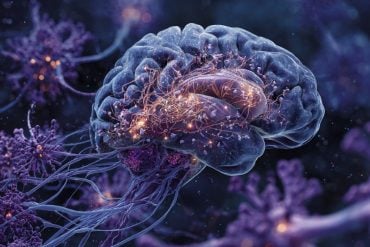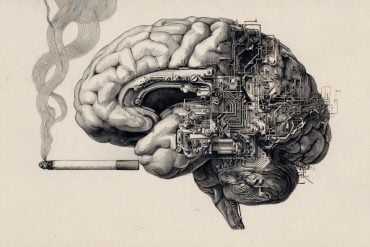Summary: A new study shows that improving emotional processing can significantly reduce chronic pain and improve quality of life. Researchers developed Pain and Emotion Therapy, an online intervention teaching emotional regulation, which led to notable pain reduction in participants.
Those who received the therapy reported lower pain intensity, better emotional regulation, and improved daily functioning up to six months later. The findings highlight emotional dysregulation as a crucial — and previously under-addressed — factor in chronic pain and suggest accessible, holistic solutions may transform future treatments.
Key Facts:
- Emotion-Focused Therapy Works: Targeting emotional regulation led to a ~10-point reduction in pain intensity.
- Long-Lasting Benefits: Improvements lasted up to six months, affecting pain, mood, and sleep.
- Accessible and Scalable: Delivered online, the therapy reached patients across Australia, including remote areas.
Source: University of New South Wales
A new study led by UNSW Sydney and Neuroscience Research Australia (NeuRA) shows that targeting emotional processing is key to treating and managing chronic pain.
The study is based on a randomised controlled trial led by Professor Sylvia Gustin and Dr Nell Norman-Nott, both from UNSW and NeuRA.
Along with a team at NeuRA’s Centre for Pain IMPACT, they published their results today in JAMA Network Open.

The trial showed that enhancing the brain’s capacity for emotional processing through therapeutic intervention is an effective approach to managing chronic pain.
“By changing how we manage emotions, it is possible to change the experience of pain itself,” Prof. Gustin says.
“This is not just a temporary relief but a potential long-term improvement in quality of life for those affected by chronic pain.”
Prof. Gustin and Dr Norman-Nott developed Pain and Emotion Therapy — a novel and emerging eHealth intervention.
The therapy aims to retrain the brain to more easily process emotions by improving an individual’s ability to deescalate negative emotions and enhance positive ones.
The trial took place from March 2023 to September 2024 and focused on the experiences of 89 people with chronic pain.
The authors say the results could lead to new ways of treating chronic pain, emphasising the profound impact of emotional health on physical wellbeing.
The online therapy, made available through the trial, is the first of its kind, delivered through eight group-based therapist-guided sessions by video conference across Australia.
Participants also used an app and handbook for self-learning. The control group continued their usual treatment.
Prof. Gustin says those who received the new treatment reported better emotional regulation as well as pain reduction equal to a 10-point decrease on a 100-point scale for pain intensity within a six-month follow up.
“This shows not only a clinical improvement, but one that makes a noticeable difference in the daily lives of the people affected,” she says.
Understanding chronic pain
Chronic pain, defined as pain lasting longer than three months, affects around 30% of people globally. The economic costs are estimated to be higher than that of heart disease, cancer and diabetes combined.
Declining mental health is also widespread, with up to 80% of people with chronic pain experiencing depression and anxiety. In addition, suicide rates are two to three times higher than those of the general population.
“A key factor in disease progression is the inability to regulate negative emotions,” Prof. Gustin says.
“This is disrupted by the impact of persistent pain on the brain’s emotional circuitry. The resulting emotion dysregulation is an ill-understood and undertreated aspect of chronic pain, which we addressed in this trial.”
Study participant Jabez Allies has had chronic back pain for 10 years. She says chronic pain affects her emotions.
“It makes me feel more worried, moody and frustrated, which in turn affects my pain. The more negative emotions I have, the worse my pain is, and vice versa,” she says.
Prof. Gustin says this cycle of worsening pain and increasing negative emotions is a common presentation.
“It shows us that chronic pain really does have a considerable effect on how people feel and the level of pain they experience.”
A boost to traditional treatments
Dr Norman Nott says that in the past 50–60 years, the model of chronic pain has shifted focus.
“We’ve gone from purely medical and biological approaches to a more holistic treatment model that includes addressing social and psychological experiences,” Dr Norman Nott says.
She says while prescription and non-prescription pain medications continue to play an important role in treatment, they have limitations.
“I’m thinking particularly of side effects and diminishing efficacy over time. Opioids, specifically, present considerable issues with dependency and declining effectiveness.”
She says, “though psychological therapies come with few side effects, we know there are still improvements needed, particularly to address the key mental health concerns of people with chronic pain, such as identifying and expressing emotions, and calming down emotional reactiveness.
“The focus on training for emotional regulation appears to be the missing piece of the jigsaw puzzle of chronic pain treatment.
“This is why we created this therapy – to focus on emotion processing by improving how people manage their emotions.”
Richard Beaumont is a participant who has had cancer pain and chronic lower back pain for 11 years. He says he frequently gets pain that reaches an eight or nine out of 10.
“After receiving Pain and Emotion Therapy I can bring this right down to a four or five just by calming the farm,” he says.
Targeting the emotional brain
“Previous research shows us that the brain can be trained to identify negative emotions and regulate them,” Prof. Gustin says.
“With this trial we can now see that engaging emotion regulation skills can reduce the intensity of pain and improve several other factors such as depression, anxiety and sleep problems.”
Dr Norman-Nott says this new therapy works by teaching participants that we need emotions in our lives.
“Often when we live with chronic pain for many years, negative emotions get pushed down and positive emotions become harder to identify,” Dr Norman-Nott says.
“We focus on helping to identify and bring up those negative emotions so that they can be acknowledged and resolved – while also realising the potential positive aspects of life and setting goals for the future.”
Accessible treatment for all
The accessibility of psychological treatment for chronic pain is a key point of governmental concern.
The progression and management of the disease are further aggravated by long wait times and limited healthcare services outside of capital cities.
“Our online treatment delivery reduced barriers by making it accessible to those who struggle with mobility, social anxiety, or physical exhaustion from travelling to in-person appointments,” Dr Norman-Nott says.
“It enabled them to participate from every state in Australia, including many from remote and regional locations.
“Participants attended the online sessions from their homes, or wherever it was comfortable for them, so they could train their emotion regulation skills when it suited them via the customised app and workbook.”
The next step for rolling out Pain and Emotion Therapy is a larger clinical trial supported by the Medical Research Future Fund, due to start in 2026.
The researchers are now calling for participants to register their interest in the trial.
“The results we’ve seen so far are a big improvement in our understanding of chronic pain, showing how important it is to treat both the body and emotions together,” says Prof. Gustin.
About this emotional processing and pain research news
Author: Melissa Lyne
Source: University of New South Wales
Contact: Melissa Lyne – University of New South Wales
Image: The image is credited to Neuroscience News
Original Research: Open access.
“Online Dialectical Behavioral Therapy for Emotion Dysregulation in People With Chronic Pain” by Sylvia Gustin et al. JAMA Network Open
Abstract
Online Dialectical Behavioral Therapy for Emotion Dysregulation in People With Chronic Pain
Importance
Current therapeutic approaches are inaccessible to many people with chronic pain and frequently fail to address emotion dysregulation as a key factor in psychological comorbidity and pain intensity. An effective and accessible emotion regulation–focused intervention is needed.
Objectives
To compare the efficacy of online dialectical behavioral therapy for chronic pain plus treatment as usual (iDBT-Pain) with only treatment as usual on emotion dysregulation in people with chronic pain.
Design, Setting, and Participants
This 2-arm randomized clinical trial was conducted from March 2023 to September 2024 in Australia. Participants were adults with chronic pain (lasting ≥3 months) and weekly pain intensity of 3 or higher out of 10 (10 indicating worst pain), without psychotic or personality disorders, and without dementia.
Eligible participants were randomly assigned (1:1 ratio) to receive either iDBT-Pain for 9 weeks or treatment as usual only. Intention-to-treat data analyses were performed between August and September 2024.
Interventions
The iDBT-Pain group received 8 group-based 90-minute therapist-guided online sessions as well as an app and a handbook for self-learning. Content focused on DBT skills training, including pain science education. Participants in the treatment-as-usual group continued usual care, which consisted of treatment options that can be accessed in the community.
Main Outcomes and Measures
The primary outcome was emotion dysregulation at 9 weeks after randomization. The Difficulties in Emotion Regulation Scale (score range: 18-90, with higher scores indicating higher emotion dysregulation) was used in assessment.
Results
Among 89 participants (mean [SD] age, 51.5 [14.2] years; 74 females [83%]), 44 (49%) were randomly assigned to the treatment-as-usual group and 45 (51%) were randomly assigned to the iDBT-Pain group. Overall, 79 participants (89%) completed the 9-week assessment. Between-group difference in emotion dysregulation over time favored iDBT-Pain over treatment as usual at 9 weeks (−4.88; 95% CI, −9.20 to −0.55; P = .03; Cohen d = −0.46 [95% CI, −0.87 to −0.08]).
Conclusions and Relevance
In this randomized clinical trial, the iDBT-Pain intervention, delivered through a self-learning and therapist-guided hybrid approach, resulted in sustained improvements in emotion dysregulation in people with chronic pain.
Trial Registration
Anzctr.org.au Identifier: ACTRN12622000113752






